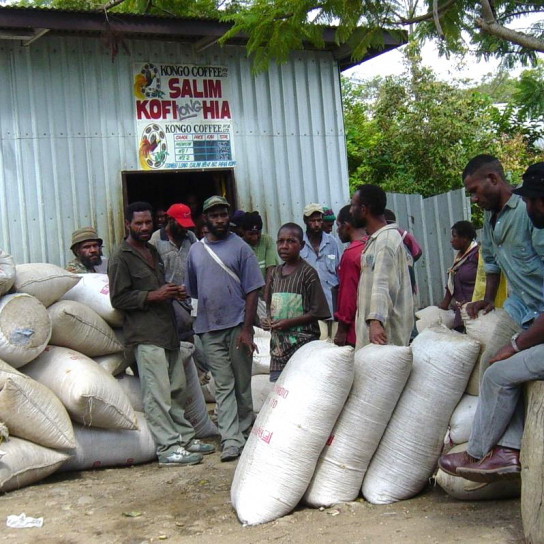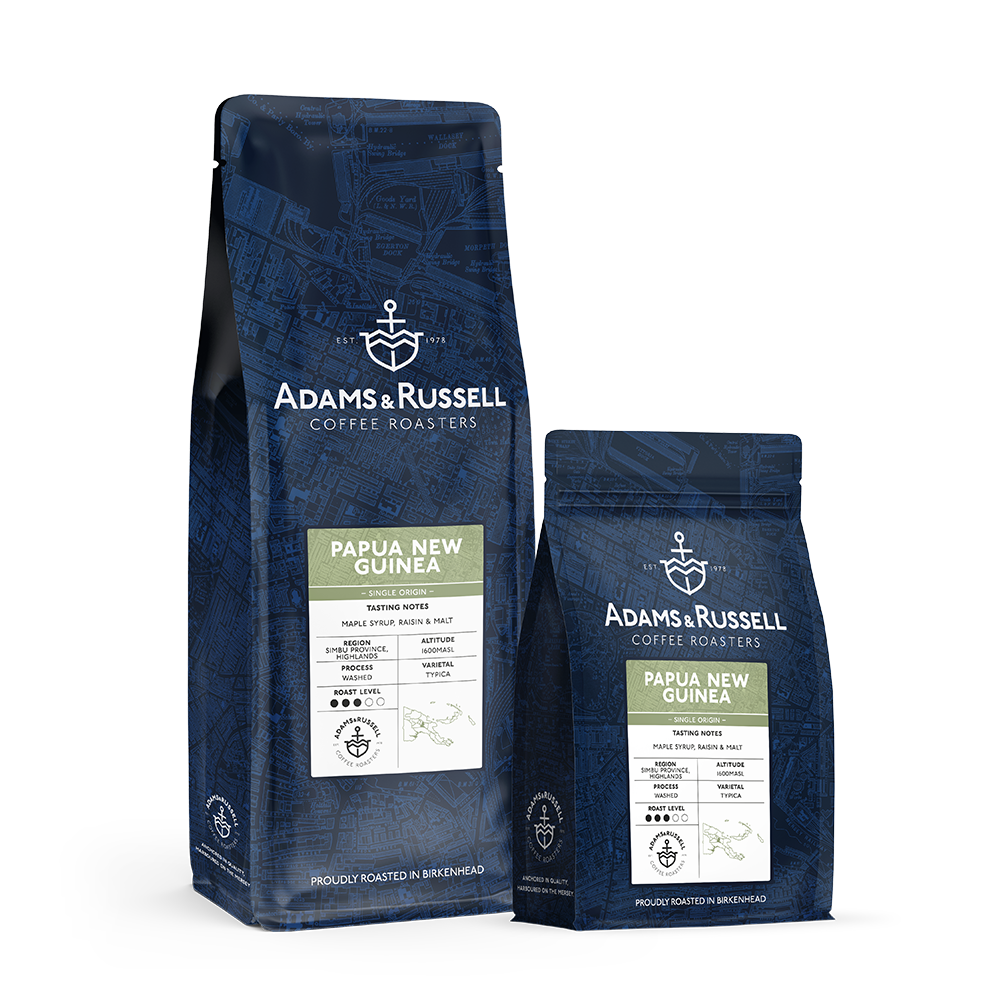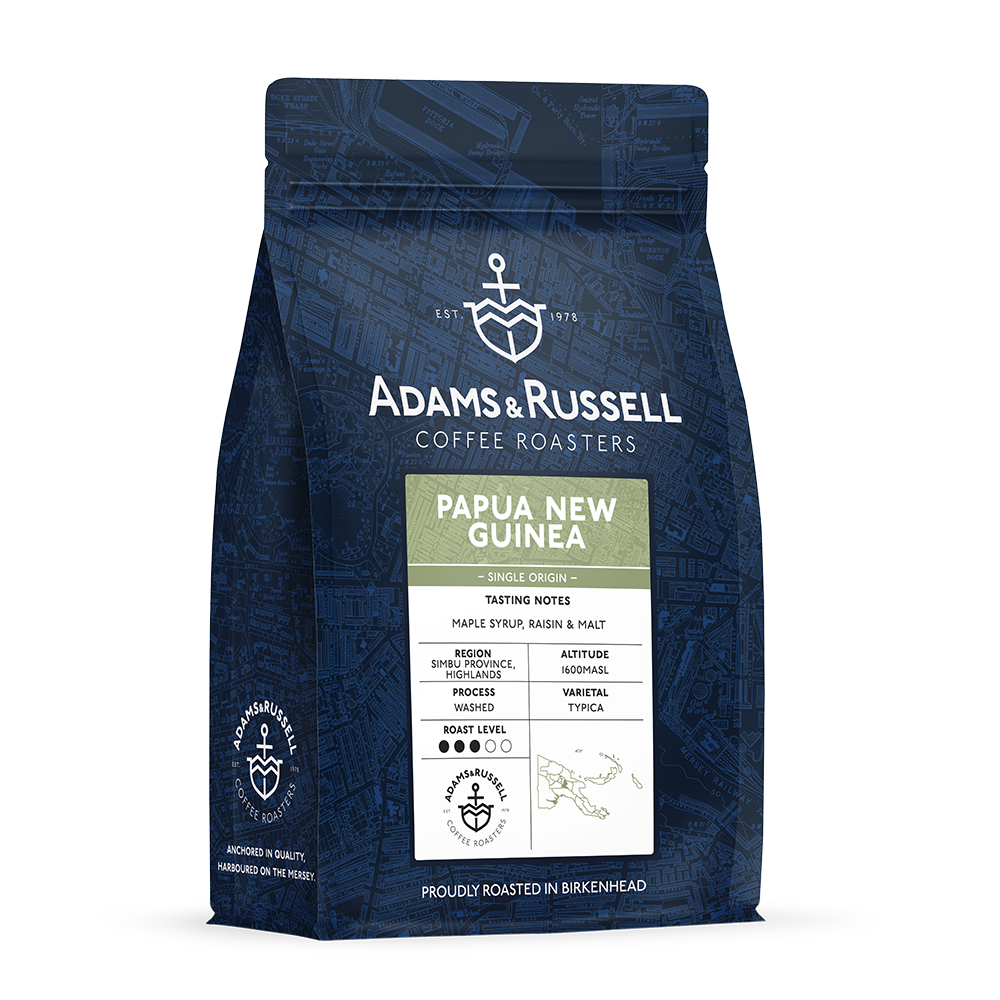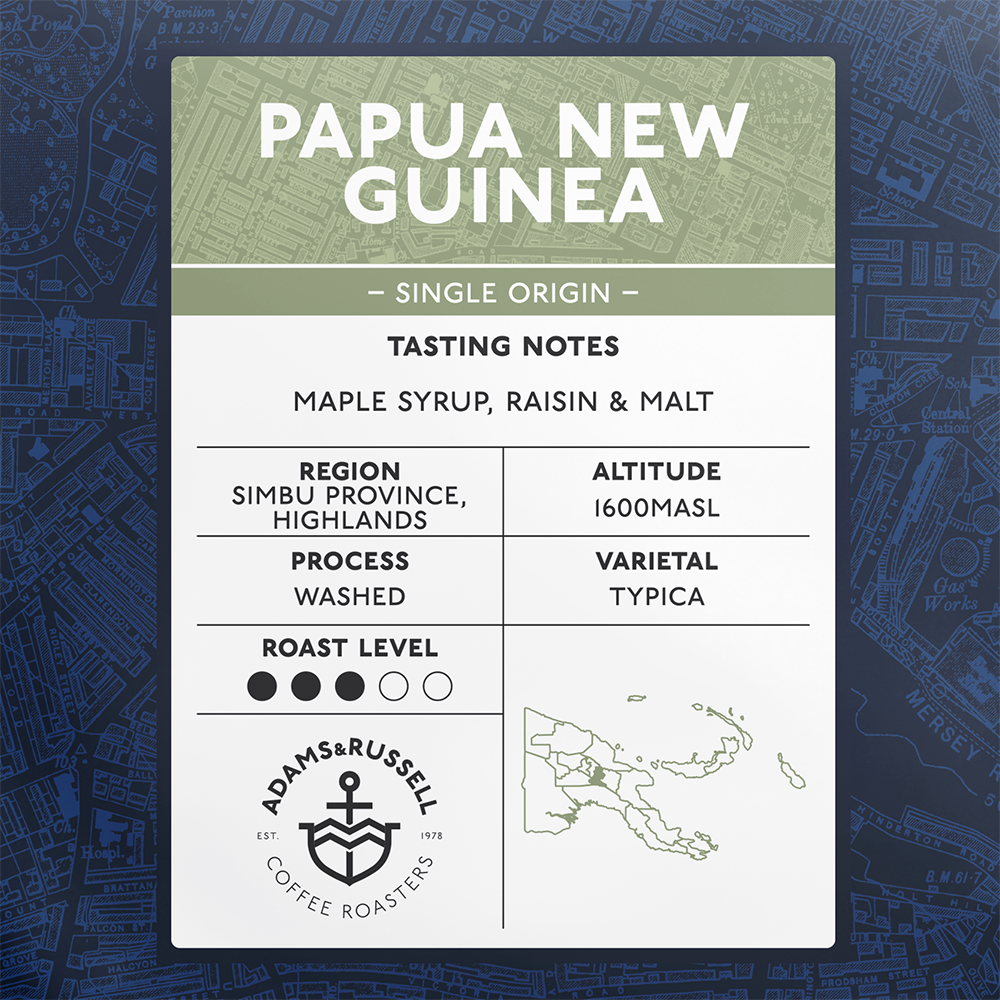ROAST & PROFILE

papua new guinea
REGION
simbu province, highlands
ALTITUDE
1300m - 1600m
TASTING NOTES
maple syrup, raisin & malt
VARIETAL
typica
PROCESS
Washed
ROAST LEVEL

Papua New Guinea Coffee: Kongo Coffee Limited
Kongo are based in the Simbu province- Papua New Guinea’s third largest coffee producing province. Export began in 1999, since then they have been responsible for overseeing the growing, processing and exporting of approximately 7200 tonnes of green coffee per year. This is 10% of Papua New Guinea’s annual coffee production.
Kongo Coffee look after multiple smallholder producers and are committed to the families within the growing communities. They provide funding for building development and schools as well as education and sporting scholarships.






6 reviews for Papua New Guinea
Nigel (verified owner) –
Great coffee
Richard Hallett (verified owner) –
We like it, really nice coffee
John Pembery (verified owner) –
One of the best coffees I have ever tasted.
Dave (verified owner) –
Dang! This is good coffee. Not quite Jamacian Blue Mountain good, but closest i’ve found and is very reasonably priced. Strong bite, full body but smooth with it. Flavour is strong enough to wind back the roasting.
wheelwrites (verified owner) –
Currently our equal favourite with the Columbian La Manuela
will benton –
Very very nice. Drinks well as espresso, nice berry hit initially with a lovely dark chocolate aftertaste. When pulling the shot this coffee seems to prefer the lower end of the temperature range..